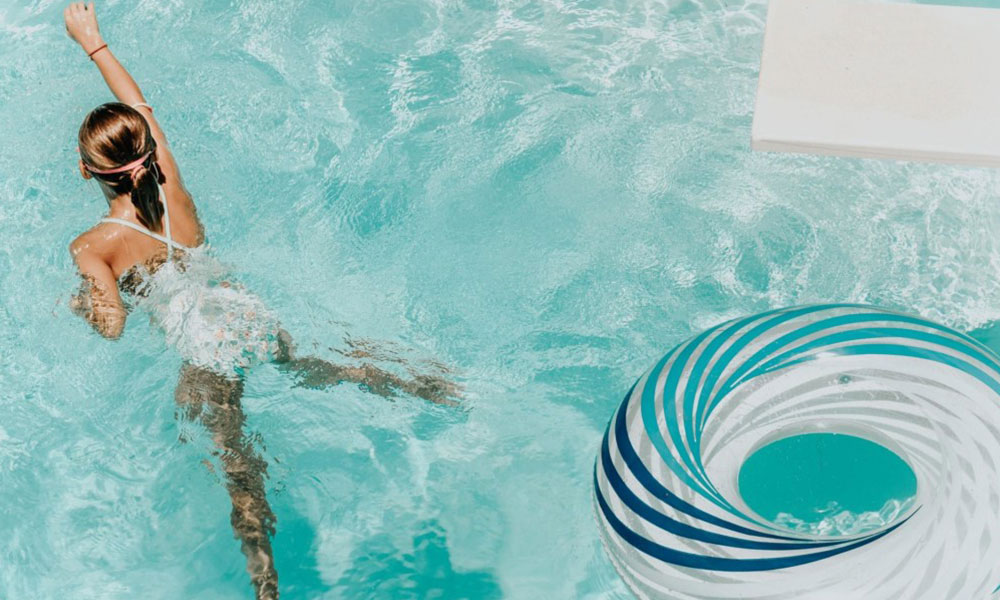Whether you’ve recently completed new pool construction or have had your pool for years, the idea of converting to a saltwater pool may pique your interest. Changing from a chlorinated pool to a saltwater pool has a number of advantages. They include staying away from the itching, redness, and harmful odors that come with chlorine. The number of chemicals you’ll need to buy and introduce to the pool will be considerably reduced with the new pool.
Select a Saltwater System
When deciding which saltwater pool system is right for you, there are two main factors to consider:
Cost – Make sure you’re aware of not only the system’s original cost but also the cost coming replacement cells (which typically need to be replaced every 3-5 years).

Size of your pool – If you don’t find a saltwater system that fits your pool’s volume, converting to saltwater can be a problem. You can’t expect the equipment to work well if it was designed for smaller pools than yours.
Make a Clear Decision About Draining the Pool or Not
Your pool is currently filled with water. Before you set up the chlorinator, think about what you’re going to do with that water.
Is it necessary to drain your pool? It isn’t required unless you’re already utilizing polyhexamethylene biguanide, in which case it’s an alternative.
Polyhexamethylene biguanide is the active ingredient of a chlorine-incompatible antibacterial pool sanitizer. If you anyhow leave this chemical in the water, your chemicals may become out of balance, and your chlorine may be unable to keep clean.
Draining the pool is, once again, an option. When you need to drain out the antibacterial agent, this is one technique. The other option is to “burn” the polyhexamethylene biguanide with a huge amount of chlorine. Your water will turn white if you utilize the burning method. As soon as the whiteness appears, you can begin converting your chlorinated pool to saltwater.
Embrace Balance
Although salt is essential for saltwater pool conversion, you should also be aware of other factors. Calcium hardness, free chlorine, pH, and alkalinity are the most common chemical tests.
Phosphates are another test worth doing; these kits are inexpensive, despite the fact that they do not come with standard pool test kits. Your phosphate level should be less than 200.
Phosphates (which can come from a variety of sources, including chemicals, rainwater, and human pollutants) can build a deposit inside a salt cell that functions much like glue. As a result, targeting these chemicals in saltwater pools is critical.
You can buy a phosphate reducer to lower your phosphate levels if they’re too high. Testing shows steps to take in any situation where anything is out of balance.
Last but not least, use a salt test strip to examine your water. Expect the salt level to be zero at first, but it may turn out to be a little higher. Reduce the amount of salt that you add (see below) if the level is higher than zero.
Install the Chlorinator
Following are the basic tasks involved in this important salt water pool conversion process (always deferring to your manual). Because you are working with both electricity and water, you must use tremendous caution.
Mount the chlorinator controller in a convenient location near your pool equipment pad
Connect the power supply to the chlorinator controller. With the controller, you should observe bonding wire and grounding wire, allowing you to work safely. You probably be able to connect directly to a GFCI (ground fault circuit interrupter) circuit. You can also connect it to a pool pump or a timer.
The chlorinator cell, which should be the last component on the pipe before the water returns to the pool, must now be installed.
The chlorinator controller must be connected to the chlorinator cell.
Clean the Pool’s Floor and Walls
After allowing the pool pump to circulate the salt for 24 hours, double-check that all of the salt you added is completely dissolved. Brushing the surface of the pool structure does this.
Retest
To check the level, use another pool salt test strip. Reduce or raise salt production with the saltwater generator’s dial if your salt is outside of the regular range. Retest in 24 hours to make sure you’re still in the right range.